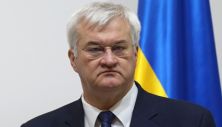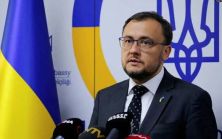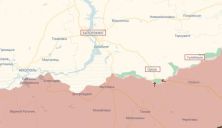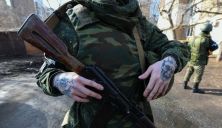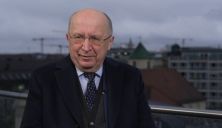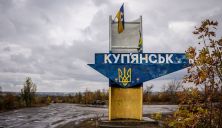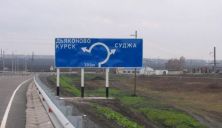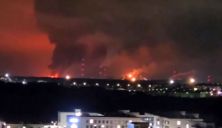Switzerland has frozen more than $8 billion in Russian financial assets. This is only 5% of the aggressor country’s funds that are under its jurisdiction. Foreign Minister of Ukraine Dmytro Kuleba spoke about this in an interview with the Swiss media company Swissinfo. According to him, Kyiv hopes that the allies can do more. FREEDOM looked into how many Russian funds the EU states blocked after the start of Russia’s full-scale invasion of Ukraine, and how Brussels plans to use this money.
The total value of public and private assets of the aggressor country blocked by Europe after the start of Russia’s full-scale invasion of Ukraine amounts to 240 billion euros.
“In Europe we have 37 billion euros of private funds, as well as 208 billion of public assets. We will continue to work on the issue of funding reparations, because it is important that Russia compensates for the damage. And we are working on this in all our discussions that we have regarding Russian assets – private or public,” said European Union Commissioner for Justice Didier Reynders.
Brussels is working on a mechanism that would allow frozen Russian funds to be used to help Ukraine. However, Moscow’s partners are demanding that the European Union abandon plans to confiscate Russian state assets. The Kremlin could ask China, Saudi Arabia and Indonesia to lobby its interests, a senior diplomat from a non-EU state said on condition of anonymity.
“These countries are very skeptical about this idea. They are worried that this will set a precedent. In other words, these states will fear that they could be the next to lose. They may not only fear a precedent, but also act on behalf of Putin, not wanting the EU to help Ukraine on the battlefield,” writes Politico, citing an anonymous source.
Kyiv considers the complete confiscation of Russian assets abroad to be fair. The country needs predictability and stability, regardless of political fluctuations in the world, said Prime Minister of Ukraine Denis Shmygal.
Europe is not yet ready for a complete withdrawal of Russian funds, but is seriously talking about transferring to Ukraine the interest that Russian assets generate in Western banks and depositories. Over two years of Russia’s full-scale war against Ukraine, these revenues amounted to approximately $4 billion. Kyiv may receive the first tranche of 2 to 3 billion as early as July 2024.
“I propose to provide 90% of these proceeds from frozen Russian assets in order to increase military aid to Ukraine. We will do this through the European Peace Fund, which is an intergovernmental fund. And another 10% will remain – to the EU budget, in order to be used for the restoration of Ukraine,” said EU High Representative for Foreign Affairs and Security Policy Josep Borrell.
Ukraine wants to use frozen Russian money both for military needs and as reparations. For the second, it is necessary to create a special compensation mechanism. On April 2, 2024, the international Register of damage caused to Ukraine by Russian aggression was launched. He is already collecting and systematizing information about the destruction. The next step is the creation of a compensation commission.
“The Russian state does not recognize the fact that it must pay reparations. Secondly, Russia is a permanent member of the Security Council, and within the framework of the UN Security Council it is also not possible to create a compensation mechanism, since it will block it, so there are discussions that frozen Russian assets, which could be confiscated and transferred to subsequent Ukraine,” explained lawyer Oleg Gorbachev.
The United States of America is also looking for a way to make Russia pay for its aggression. A bill that would allow the confiscation of $5 to $8 billion in Russian assets was approved by committees of the US House of Representatives and Senate. Congress will soon submit the document to President Joe Biden for consideration.
Let us remind you that on April 2, 2024, the international Register of damage caused by Russian aggression against Ukraine was launched. It will accept applications from people, businesses and the government.
